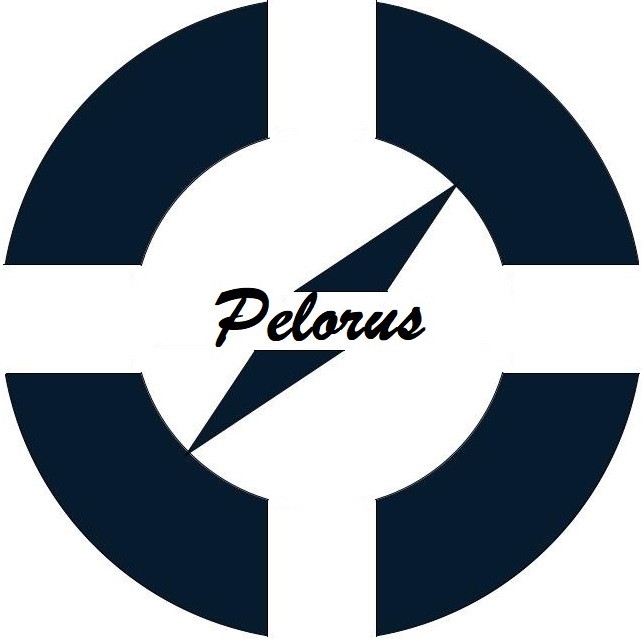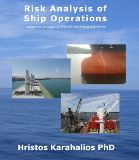USCG Ballast Water Regulations
Ballast Water and Sediment Management Requirements
Ballast is an essential issue for a ship’s safety for its stability. The problem is known over 90 years ago. However, recent IMO actions lead to regulation since the increase in global shipping traffic, vessel size, and capacity has led to contamination in 84% of the world’s 232 marine eco-regions. Those with limited environmental awareness should consider that the ballast issue is eventually threatening people’s health in many countries.
The transfer of pathogen organisms through ballast water has been a significant threat to local ecosystems and public health. In addition, the microorganisms transferred through water have been resistant to long voyages on ships’ ballast tanks. Ballast tank means any tank or holds on a vessel carrying ballast water, including dedicated tanks or strengthened cargo holds.
As a reaction to the threat, the IMO introduced Resolution A.868 (20), adopted in November 1997. The title is “Guidelines for the Control and Management of Ships’ Ballast Water to Minimise the Transfer of Harmful Aquatic Organisms and Pathogens”. The scope of this convention is to minimise the global distribution of microorganisms through ballast transfer.
The BWM Convention requires all ships of 400 gross tonnes (gt) and above to comply as follows.
• To have on board an approved Ballast Water Management Plan (approved by class or flag as appropriate) and
• To have on board a Ballast Water Record Book,
• To be surveyed and issued with an International Ballast Water Management Certificate.
(For ships whose flag administration has not ratified the BWM Convention, a certificate or statement of compliance can be issued.)
The ballast discharges are currently allowed as per regulation D-1 or D-2, i.e., that ballast is exchanged or treated. This obligation applies to ballast discharges both at sea and in port. Exchange means to replace the water in a ballast tank using one of the following methods:
• Flow-through by pumping out ballast water in mid-ocean and continuously overflowing the tank from the top until three entire volumes of water have been changed. This is usually carried out before entering EEZ (Exclusive Economic Zone is the area which extends from the baseline of the territorial sea of a state up to 200 nautical miles)
• Empty & refill a ballast tank with mid-ocean water.
Ballast Water Treatment Systems
The risks of ballast water exchange are significant when considering a ship’s stability and strength. Furthermore, a damaged ship will be a great risk for seafarers’ lives and the marine environment at a long distance from ashore. Consequently, Ballast Water Treatment Systems are a promising solution.
Ballast water treatment standards should be approved as per Regulation D-2 of the BWM Convention. Each system should have a type approval certificate according to Resolution MEPC. 174(58), which updated Resolution MEPC.125(53). The same standards apply to USCG.
USA requirements (CFR, Title33, Vol2, Sec151-2036)
Existing vessels (for the USA) with ballast capacity greater than 5,000m3
- First scheduled dry-docking after 1 January, 2016
An extension letter for the above deadline may be provided by the USCG and EPA for 2 years, case by case. Subject to the following:
- Extension requests must be submitted to the Coast Guard no later than 12 months before the scheduled implementation date.
- The United States means the States, the District of Columbia, the Commonwealth of Puerto Rico, Guam, American Samoa, the Virgin Islands, and the Trust Territory of the Pacific Islands including the navigable waters of the United States. For this regulation, the navigable waters include the territorial sea as extended to 12 nautical miles from the baseline (as this is marked in nautical charts)
- USA requirements apply to all vessels, US and foreign, equipped with ballast tanks, that operate in the waters of the United States and are bound for ports or places in the United States. Voyage means any transit by a vessel destined for any United States port or place in which a vessel is anchored or moored.
- Captain of the Port (COTP) means the Coast Guard officer designated as the COTP, or a person designated by that officer, for the COTP zone covering the US port of destination. These COTP zones are listed in 33 CFR part 3.
VGP related requirements
In addition to maintenance of a ballast water management plan, the following VGP requirements should be followed in the USA:
- Avoid the discharge or uptake of ballast water in areas within or that may directly affect marine sanctuaries, marine preserves, marine parks, or coral reefs.
- Minimise or avoid uptake of ballast water in the following areas and situations:
- Areas known to have infestations or populations of harmful organisms and pathogens (e.g., toxic algal blooms).
- Areas near sewage outfalls.
- Areas near dredging operations.
- Areas where tidal flushing is known to be poor or times when a tidal stream is known to be more turbid.
- In darkness when bottom-dwelling organisms may rise up in the water column.
- Where propellers may stir up the sediment.
- Areas with pods of whales, convergence zones, and boundaries of major currents.
- Discharge only the minimal amount of ballast water essential for vessel operations while in the waters of the United States.
- Rinse anchors and anchor chains when you retrieve the anchor to remove organisms and sediments at their place of origin.
- Remove fouling organisms from hull, piping, and tanks on a regular basis and dispose of any removed substances in accordance with local, State and Federal regulations.
8. Bibliography
CFR Title 40. Protection of Environment Chapter I. Environmental Protection Agency Subchapter D. Water Programs Part 122. EPA Administered Permit Programs: The National Pollutant Discharge Elimination System Part 122—EPA Administered Permit Programs: The National Pollutant Discharge Elimination System
CFR § 151.2036 If My Voyage Does Not Take Me Into Waters 200 Nautical Miles Or Greater From Any Shore, Must I Divert To Conduct A Ballast Water Exchange?
CFR 151.2037 If My Vessel Cannot Conduct Ballast Water Management Practices Because Of Its Voyage And/Or Safety Concerns, Will I Be Prohibited
CFR Title 33. Navigation and Navigable Waters Chapter I. Coast Guard, Department Of Homeland Security Subchapter O. Pollution Part 151. Vessels Carrying Oil, Noxious Liquid Substances, Garbage, Municipal Or Commercial Waste, And Ballast Water Penalties For Non-Submission Of Ballast Water Management Reports
CFR Title 33. Navigation And Navigable Waters Chapter I. Coast Guard, Department Of Homeland Security Subchapter O. Pollution Part 151. Vessels Carrying Oil, Noxious Liquid Substances, Garbage, Municipal Or Commercial Waste, And Ballast Water Subpart D. Ballast Water Management For Control Of Nonindigenous Species In Waters Of The United States Section 151.2036. Extension Of Compliance Date.
Comdtpub P16700.4 Nvic 01-04 02 January 2004 Navigation And Vessel Inspection Circular No. 01-04 Subj: Shipboard Technology Evaluation Program (Step): Experimental Ballast Water Treatment Systems
Karahalios, H. (2017). The Application Of The Ahp-Topsis For Evaluating Ballast Water Treatment Systems By Ship Operators. Transportation Research Part D: Transport And Environment, 52, 172-184.
Lloyd’s Register Group Limited. 2015. Understanding Ballast Water Management – Guidance For Shipowners And Operators
Marine Environment Protection Committee (Mepc), 71st Session 3-7 July 2017
Mohammadkhanloo, Kianoosh, And Hassan Ghassemi. "Critical Review Of The Imo On Ballast Water Convention And Its Impact On Shipping." International Journal Of Multidisciplinary Sciences And Engineering, Vol. 8, No. 2, March 2017
Title 33 - Navigation and Navigable Waters Chapter I - Coast Guard, Department Of Homeland Security (Continued)Subchapter O – Pollution Part 151 - Vessels Carrying Oil, Noxious Liquid Substances, Garbage, Municipal Or Commercial Waste, And Ballast Water Subpart D - Ballast Water Management For Control Of Nonindigenous Species In Waters Of The United States
UK P&I (2013). Ballast Water Management Convention 2004 – An Update.

